‘The studio wanted Demi Moore’
Kristin Scott Thomas, actor
I’d read the novel and fallen totally in love with it. The poetry of the writing just swept me away. So when I heard there was going to be a film, I thought: “God, I have to get on it.” I went to see Anthony Minghella, whom I’d never met before, and we had a disastrous lunch. I was so nervous, so touched by the story, so overwhelmed. I knew they were thinking of me for Katherine, but that I would be a leftfield choice. I’d just had my second child and had zero confidence. I gabbled away and could see Anthony’s eyes glazing over. So afterwards I wrote him a letter saying: “Please just forget that terrible lunch. I am the K in your film.”
I got an audition and it was extraordinary. I went into a room and there was Ralph Fiennes. The only thing I remember about him was that he was wearing very squeaky trainers and was devastatingly good looking. We sat down and read – and it all just fell into place. Then, when we got to the end, Anthony said: “Can we do it all again?”
Afterwards, they said I’d got the part. Then there was just this radio silence. I thought they’d forgotten about me or had found someone else. I was too scared to phone in case I was told: “No, sorry, we are not doing it with you after all.” I went on holiday and by the time I came back in August I still hadn’t heard. So I finally rang the studio in Italy. It just rang and rang. Eventually, someone picked up and said: “Oh yes, you’re arriving on 4 September.”

What I didn’t know was that the delay was caused by the production falling to bits. At one point, very early on in casting, Demi Moore’s name had come up, and the studio wanted her. Anthony wanted me and Willem Dafoe. He stuck to his guns – and the studio pulled out. In the end, Harvey Weinstein stepped in and saved it.
It was my first big part in a big movie. And the studio hadn’t wanted me! So I felt a lot of pressure. I had to do a good job. My relationship with Anthony was quite prickly. He didn’t know how to approach me and I didn’t know how to be approached. He was a brilliant director, though: he gave the best instructions and was gentle and kind. But I felt very defensive. I loved playing Katherine but I wanted everyone to back off telling me how to play her. Anthony wanted me to cry a lot but I felt she shouldn’t weep so much. He won of course – directors always win.
Ralph and I were both very young and passionate about our roles. But love scenes are really hard. It’s like jumping stark naked into an icy swimming pool. You just have to plunge right in. Then suddenly something will bring you back and you realise you are stark naked in a room with people who aren’t and they are all gawping at you.
My favourite scene in the film is when Katherine is saying goodbye to Almasy, Ralph’s character. As she walks away she says: “Do you miss me yet?” He says: “Not yet.” And she says: “Ha! You will.” Then she haughtily turns on her heel – and walks into a pole. And they wanted to cut it! Saul Zaentz, the producer, and I fought so hard to keep it. I loved that bumbling quality when she is trying so hard to keep her dignity.
A lot of the filming was pretty uncomfortable. We were shooting in the Tunisian desert – the same spot where Star Wars was filmed – but it was November and freezing at night. Someone would rush over with a hot water bottle and a down jacket, but it doesn’t do the trick when it’s 4am and you’re in a thin dress. But it really was the most gorgeous place: you’d be bumping along, going to work in a Land Rover at five in the morning through these beautiful landscapes, listening to the call to prayer. It was wonderful.
Being nominated for a best actress Oscar was stressful to be truthful. I think I would feel differently today, but at that age I was so anxious and I felt under scrutiny. The success of the film was thrilling, though. I watched it not long ago. It was definitely one of my favourite films to do. It was made from the heart, with integrity, and it’s beautiful.
‘Lift Juliette! Make her swing!’
Gabriel Yared, composer
I met Anthony Minghella at a big publicity meeting in London in 1994. He had invited me along as he wanted us to work together on an advert for one of the first mobile phones. We had an immediate connection: we used to say we were engaged on an ad first, before getting married on a film! Not only was Anthony a great writer and director, he was also a talented and eclectic musician who loved pop, jazz and classical. In particular, we shared a great love for JS Bach. He liked my music for the film Betty Blue, and knew I always liked to compose from the beginning, even before shooting.

In 1995, Anthony gave me the script for The English Patient. He had three clues for the score: the first was an oriental/mid-eastern feeling; the second was Puccini for his melodic and harmonic elegance; the third, JS Bach. Anthony also had the idea of using Szerelem, a Hungarian folk song with an oriental flavour, sung by Márta Sebestyén.
I was living on an island in Brittany called Île-aux-Moines, or The Island of Monks, but travelled to San Francisco to play my music to Anthony, Walter Murch, and the producer, Saul Zaentz. One of my great memories is trying my best to recreate the orchestral score in front of them using just the piano and my voice! After some very encouraging feedback, I went back to work on my island.
Of course, it was harder to communicate at the time, but over the course of six months we exchanged faxes and phone calls, and I sent my demos via special courier. Often they’d be edited to the picture, sometimes chopped, and I would go back and recompose accordingly. Even though we were a very long distance from each other, everyone was on the same page, working in harmony.
During editing, I realised I had to replace the Aria from Bach’s Goldberg Variations as the original, which Anthony planned to use, didn’t fit any more. This was one of the most challenging things I’ve ever done. It took me a long time to write a piece of music, a piano prelude in three voices. This theme was used, among others, for the famous scene where Juliette Binoche is hoisted up by rope in the torch-lit church.
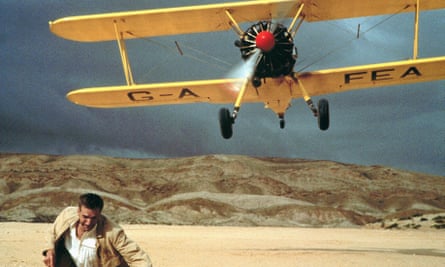
I sent Anthony the piece but he called me up saying: “Gabriel, I want you to lift her! I want you to swing her!” So I rewrote the piece completely, adding pizzicati strings and mandolins, but each time Anthony would give me the same response. It became a joke between us. Of course, once it was recorded, he loved it – as it was finally “lifting and swinging her”. At the Oscars, when The English Patient won nine awards, we were still joking about this.
Anthony took my imagination, creation and composition to another level. He inspired me to be bold, to achieve my full potential for all our projects. It was Anthony’s vision musically that hugely benefited our collaborations, and I am truly grateful to have had the opportunity to work with both him and Walter. He was, and still is, my soulmate.
‘If I could wave a magic wand…’
Walter Murch, editor
Once a film has been put together for the first time, the quickest way to answer the music question is this: just try something! Take a likely piece of pre-recorded music, sync it with the film at a possible start point, and press play. The amazing thing about this process is that it works as well as it does – sometimes brilliantly – even though the music may have been composed decades or centuries before. If you’ve seen 2001, you’ll have heard the pre-recorded music Stanley Kubrick was working with: the opening, with Richard Strauss’s Also Sprach Zarathustra, is a now-iconic fusion of image and sound.
In fact, the music for the whole film is made from pre-recorded music by Richard Strauss, Johann Strauss, György Ligeti and Aram Khachaturian. In Kubrick’s opinion, this eclectic soundtrack worked so well that he threw out the specially composed score by Alex North. Unfortunately, he did not have the courage to tell North, and it was only at the New York premiere that the composer learned what had happened to his music.
Temp-tracking, as the use of pre-recorded music is called, can be a devil’s bargain. Film-makers can become so enamoured with the track they have chosen to provide mood and atmosphere until the soundtrack is added, that they find it painful to let it go. Composers are often asked to imitate the temp track, in the hope of maintaining the musical DNA. The “shark threat” music in Jaws, for instance, was inspired by Spielberg’s use of Stravinsky’s Rite of Spring in his temp track. Is this the right way to go about doing music for film? I have mixed feelings: without question, there are some successes, such as the use of Wagner’s Valkyries in Apocalypse Now. But as an overall approach, it has the danger of introducing a subtle poison into the creative process.
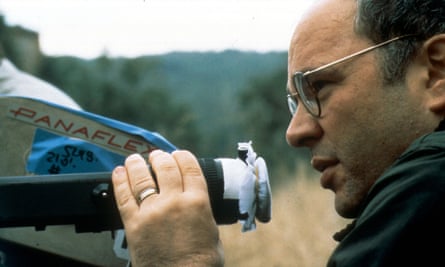
So I felt great relief when Anthony Minghella told me in 1995 that he didn’t want to use any temp music for The English Patient. Instead, he would ask composer Gabriel Yared to write several test themes and variations based on the screenplay. Similarly, Francis Ford Coppola had asked David Shire to begin writing the music for The Conversation in 1972, even before the film was shot. This had ultimately worked so successfully that I thought it would soon be standard practice, but it was more than 20 years before we tried it again on The English Patient. It helped greatly that Anthony was himself a musician: the logistical and artistic communication between him and Gabriel was as easy and deep as I have ever seen between director and composer.
If it can be arranged, this way of working sets up a creative feedback between composition and film which energises and informs each of them as they evolve in their yin/yang way. The themes that Gabriel recorded in France in the spring of 1996 were sent to us in Berkeley and tried out on various scenes. Gabriel’s music helped certain scenes find their footing; in other cases, we would recut Gabriel’s music to fit a new arrangement of scenes. These selections would be sent back to Gabriel, triggering, I am sure, a complex mix of emotions, resulting in a new set of compositions sent to us a few weeks later.
Ideas would flow from Berkeley to France and vice versa, and so it would continue for the next six months, refinement upon refinement, until the finished score was recorded in London in the autumn of 1996. Consequently, there was never that terrible moment when the musical DNA of The English Patient had to be extracted and replaced with something else: it was an evolution from beginning to end. If I could wave a magic wand, I would work this way every time.
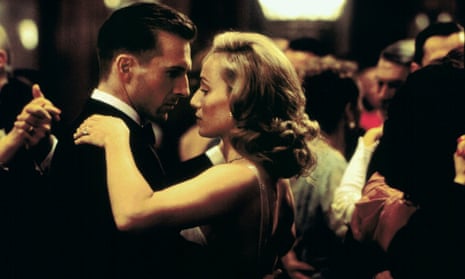
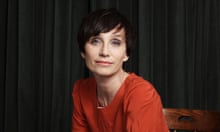

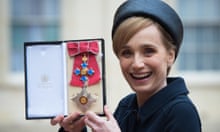
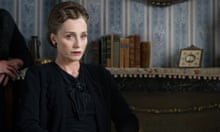




Comments (…)
Sign in or create your Guardian account to join the discussion